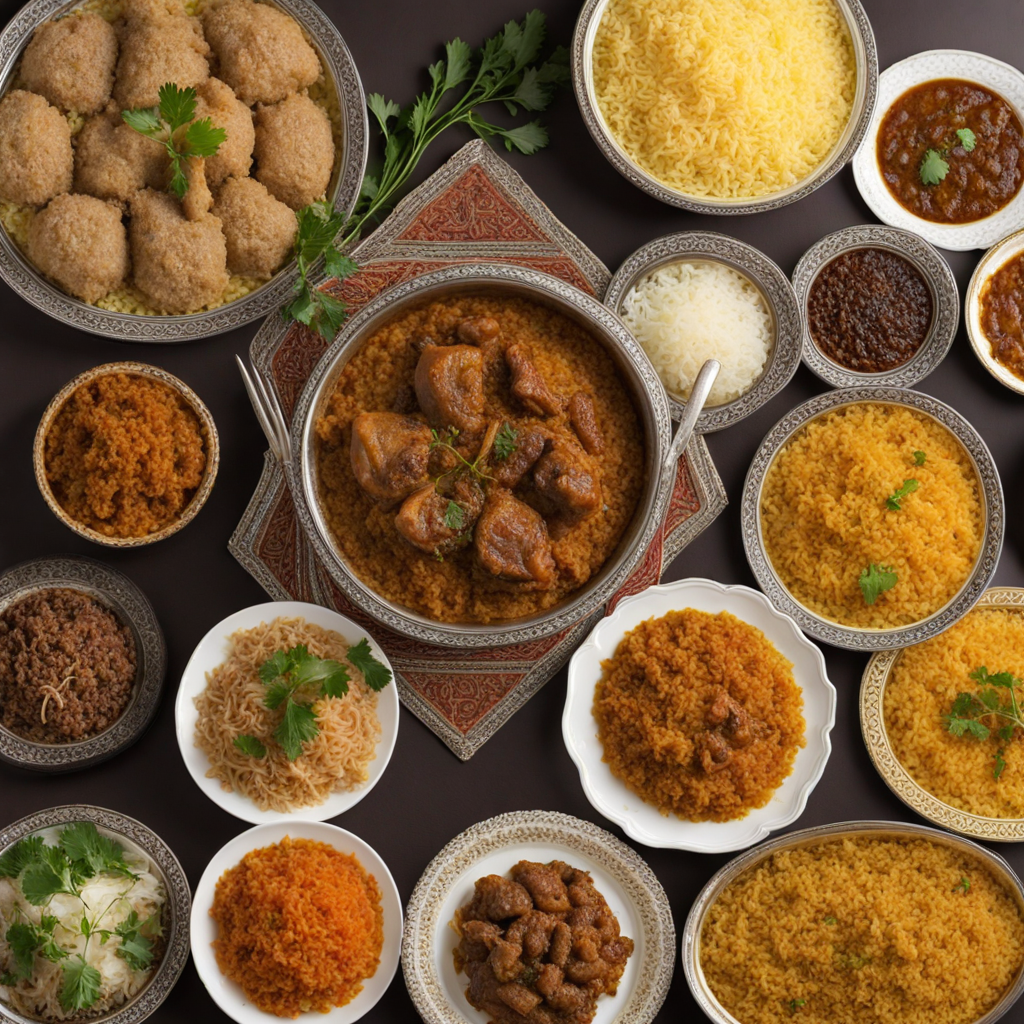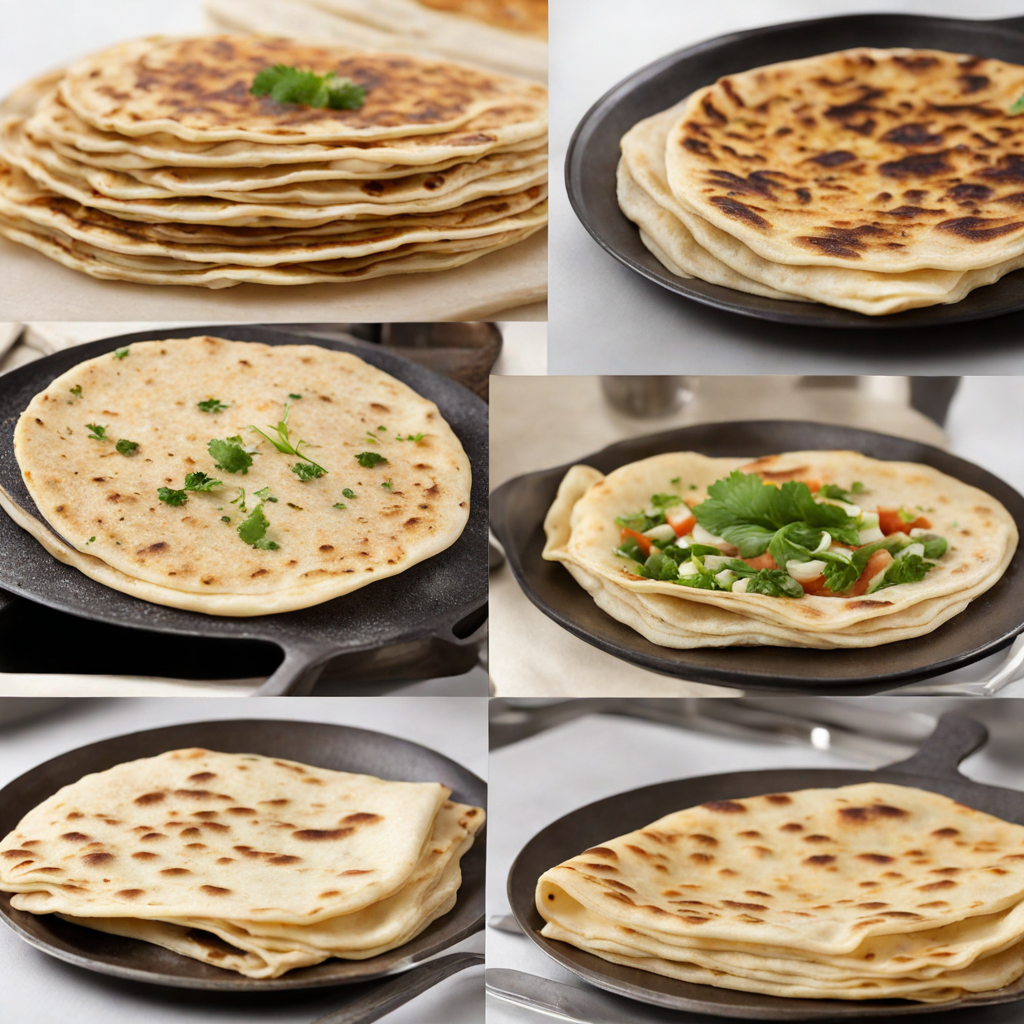Al Mandi
Al Mandi is a traditional Saudi Arabian dish that embodies the rich culinary heritage of the Arabian Peninsula. It features fragrant basmati rice, marinated meat—often chicken or lamb—that is slow-cooked to perfection. The dish is characterized by a unique blend of spices, including saffron, cardamom, and cloves, which infuse the rice and meat with an aromatic depth that is both comforting and exotic. The cooking method traditionally involves using a tandoor (a clay oven) or an underground pit, which allows the flavors to meld beautifully while imparting a smoky essence to the dish. As you delve into a plate of Al Mandi, you will notice the rice is fluffy and perfectly cooked, absorbing the savory juices of the meat. Each grain is a little treasure, bursting with flavor, while the tender meat falls off the bone with ease. The dish is often garnished with fried nuts, raisins, or fresh herbs, adding a delightful contrast in texture and a hint of sweetness to the savory profile. The presentation is often communal, served on a large platter for sharing, making it a perfect dish for gatherings and celebrations. What sets Al Mandi apart is not just its taste but also the experience it offers. Eating Al Mandi is a sensory journey, where the inviting aroma captivates your senses before the first bite. The combination of spices, the tenderness of the meat, and the aromatic rice create a harmony that transports you to the heart of Saudi culture. Often accompanied by tangy sauces or fresh salads, Al Mandi is more than just a meal; it’s an invitation to explore the warmth and hospitality that defines Saudi Arabian cuisine.
How It Became This Dish
The History of Al-Mandi: A Culinary Treasure of Saudi Arabia Al-Mandi, the fragrant, spiced rice dish traditionally served with tender meat, has gained recognition not just as a beloved staple of Saudi Arabian cuisine, but as a symbol of the nation’s rich cultural heritage. With its roots deeply embedded in the Arabian Peninsula, Al-Mandi's origin story is one of tradition, community, and the art of cooking. #### Origins in the Arabian Peninsula Al-Mandi traces its origins back to the Hadramawt region of Yemen, which has long been a melting pot of cultures due to its strategic location along ancient trade routes. The dish is thought to have been created by the Hadrami people, who excelled in the culinary arts and incorporated spices and cooking techniques from various cultures encountered through trade. The word "Mandi" itself is derived from the Arabic "Nadi," meaning "to be present," which reflects the communal aspect of sharing meals. The technique of cooking meat and rice together in a single pot over an open flame has been practiced in the region for centuries. Historically, the method involved cooking the meat in a tandoor, an underground oven, which allowed the meat to become incredibly tender and infused with smoky flavors. This method of preparation has not only defined Al-Mandi but has also influenced a variety of other dishes across the Arabian Peninsula. #### The Cultural Significance of Al-Mandi Al-Mandi is more than just a dish; it is woven into the social and cultural fabric of Saudi life. Traditionally served during special occasions, such as weddings, holidays, and family gatherings, it embodies the spirit of hospitality that is central to Arabian culture. Preparing Al-Mandi often becomes a communal activity where families and friends gather to cook, share stories, and celebrate together. In Saudi Arabia, Al-Mandi is also associated with Bedouin culture, where it was commonly enjoyed by tribesmen during gatherings. The dish reflects the nomadic lifestyle, as it is relatively easy to prepare over an open fire, making it ideal for people on the move. It is served on large platters, often communal, encouraging guests to gather around and share the meal, reinforcing bonds among family and friends. The spices used in Al-Mandi— cardamom, saffron, and black lime— not only enhance the flavor but also signify the region’s historical trade connections to India and East Africa. The dish is often accompanied by a tangy tomato sauce or a spicy dipping sauce, adding another layer of flavor and showcasing the diversity of Arabian cuisine. #### Evolution Over Time As the centuries passed, Al-Mandi transcended its humble beginnings to become a dish enjoyed by all social strata. The spread of Islam in the 7th century played a significant role in the dissemination of culinary practices across the Arabian Peninsula. As trade flourished, spices became more accessible, and the preparation of Al-Mandi evolved, incorporating new flavors and techniques. In the modern era, the dish has undergone further transformations, influenced by globalization and the influx of different cultures into Saudi Arabia. Today, Al-Mandi is often cooked with lamb, chicken, or even fish, depending on regional preferences and availability. The rice is typically infused with a blend of spices and sometimes colored with saffron or turmeric, resulting in a vibrant and aromatic dish that appeals to a broad audience. Additionally, the advent of technology has led to the rise of restaurants specializing in Al-Mandi, making it more accessible to both locals and tourists. These establishments often put their unique spin on the dish, experimenting with various cooking methods and presentation styles. This evolution has helped popularize Al-Mandi beyond the borders of Saudi Arabia and into international culinary circles. #### Al-Mandi in Contemporary Society In contemporary Saudi society, Al-Mandi remains a staple, often served during festive occasions and family gatherings. Its significance has been further amplified by its presence in cultural festivals and culinary competitions, where chefs showcase their skills in preparing this iconic dish. The Saudi Arabian government also promotes traditional foods like Al-Mandi as part of its cultural heritage initiatives, encouraging younger generations to appreciate and preserve their culinary traditions. Social media has played a pivotal role in the revival and reimagining of Al-Mandi. Platforms like Instagram and TikTok have allowed home cooks and professional chefs to share their interpretations of the dish, attracting a global audience. This new wave of culinary creativity has sparked interest in Al-Mandi, inspiring food enthusiasts worldwide to explore the complexities of Arabian cuisine. Moreover, the rising trend of food tourism has made Al-Mandi a must-try dish for visitors to Saudi Arabia. Culinary tours often include a stop at popular restaurants known for their Al-Mandi, where tourists can experience not just the flavors, but also the warmth of Saudi hospitality. #### Conclusion Al-Mandi is more than just a dish; it is a culinary emblem of Saudi Arabia that encapsulates the history, culture, and traditions of the region. From its origins in Yemen to its present-day status as a beloved favorite, Al-Mandi has evolved while remaining true to its communal roots. As it continues to adapt and thrive in a rapidly changing world, Al-Mandi serves as a reminder of the importance of food in forging connections, celebrating heritage, and nurturing community bonds. Whether enjoyed at a festive gathering or in the comfort of a family home, Al-Mandi remains a testament to the enduring spirit of Saudi culture, inviting everyone to partake in its flavorful journey through time.
You may like
Discover local flavors from Saudi Arabia







